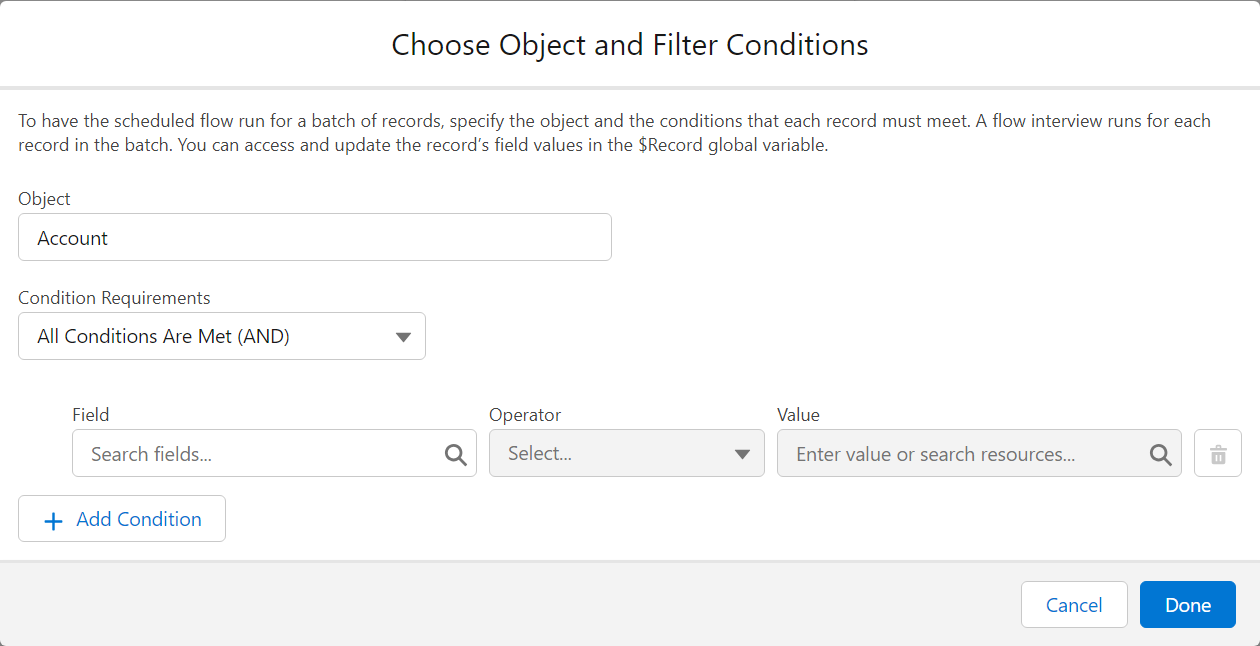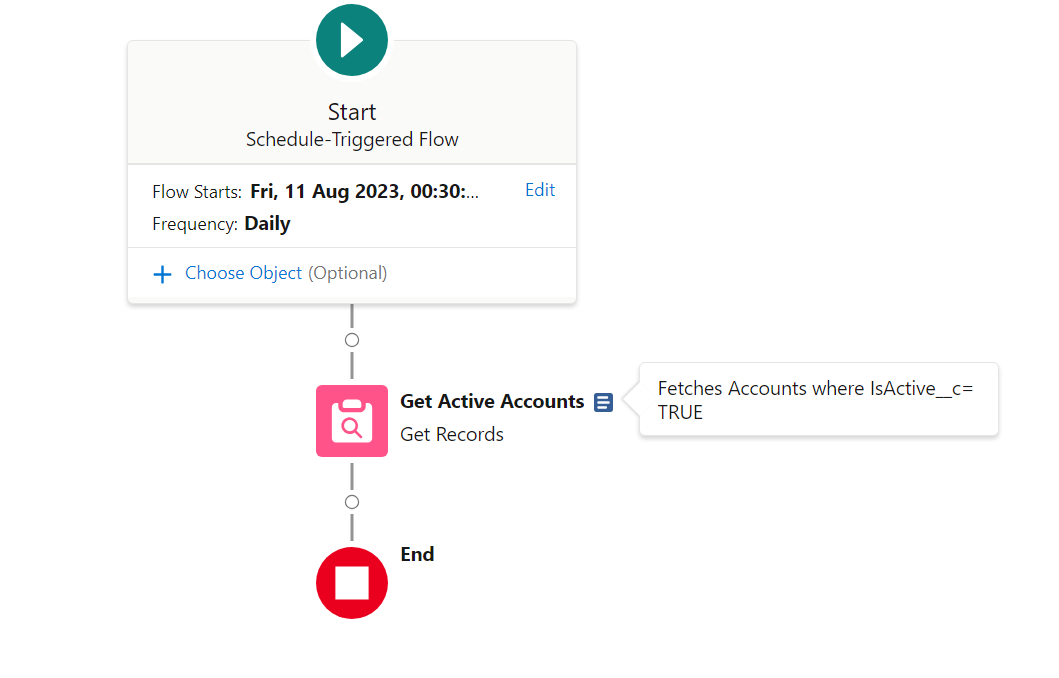Flow Structural Conventions - Scheduled
As detailed in the General Notes section, these conventions are heavily opinionated towards maintenance and scaling in large organizations. The conventions contain:
- a "common core" set of structural conventions that apply everywhere
- conventions for Record Triggered Flows specifically
- conventions for Scheduled Flows specifically (this page!)
Scheduled Flow Design
As detailed in the Common Core conventions, despite it not being evident in the Salesforce Builder, there is a VERY big difference between the criteria in the Schedule Flow execution start, and an initial GET element in a Scheduled Flow that has no Object defined.
- Putting criteria in the Start Element has less conditions available, but effectively limits the scope of the Flow to only these records, which is great in big environments. It also fires One Flow Interview per Record, and then bulkifies operations at the end.

An often-done mistake is to do the above selection, say "Accounts where Active = TRUE" for example, and then doing a Get Records afterwards, querying the accounts again, because of habits tied to Record-Triggered Flows.
If you do this, you are effectively querying the entire list of Accounts X times, where X is the number of Accounts in your original criteria. Which is bad.
- On the opposite, putting no criteria and relying on an initial Get does a single Flow Interview, and so will run less effectively on huge amounts of records, but does allow you to handle more complex selection criteria.

In the first case, you should consider that there is only one record selected by the Flow, which is populated in $Record - much like in Record-Triggered Flows.
In the second screenshot, you can see that the Choose Object is empty, but the GET is done afterwards - $Record is as such empty, but the Get Active Accounts will generate a collection variable containing multiple accounts, which you will need to iterate over (via a loop element) to handle the different cases

No comments to display
No comments to display